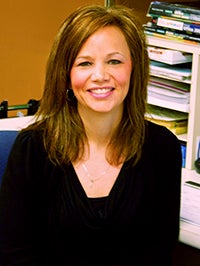There are many opportunities downtown
Published 9:46 am Tuesday, May 12, 2015
Experience Albert Lea by Jennifer Nelson
Downtown Albert Lea — when you hear this do you think of “historic downtown Albert Lea”?
Downtown Albert Lea has the largest intact historical district in the state of Minnesota. The district includes over 100 historic buildings. A listing on the National Register of Historic Places is governmental acknowledgement of a historic district, “a geographically definable area, urban or rural, possessing a significant concentration, linkage or continuity of sites, buildings, structures or objects united by past events or aesthetically by plan or physical development. A district may also comprise individual elements separated geographically but linked by association or history.”
The downtown’s period of significance is between 1874 and 1928. Before automobiles were owned by the masses, the heart of the city’s commerce was located downtown. Like most downtowns, Albert Lea’s held a wide variety of services and goods. The buildings on Broadway Avenue housed established businesses owned by many of the city’s leading families, and the architecture reflected the wealth and prominence of these businessmen. Banks, drug stores, jewelry stores, offices, an opera house, department stores and many more businesses were located downtown. The district is listed on the National Register of Historic places for its local significance in the area of commerce and architecture.
What does this mean for downtown Albert Lea today? Please come and join the city of Albert Lea Heritage Preservation Commission for our upcoming 2015 Historic Downtown Albert Lea Preservation Fair on May 20 and find out. The downtown is the symbolic heart of the city. The businesses located downtown such as the restaurants, shops and storefronts, help to shape and reflect our community’s identity and values. The Heritage Preservation Commission is working to advocate for, preserve and promote a greater appreciation for our city’s rich heritage by taking careful consideration to preserve the historic context of downtown.
I keep thinking of a quote by Dorothy from the iconic movie “The Wizard of Oz”: “if I ever go looking for my heart’s desire again, I won’t look any further than my own back yard.” This is the way I feel about downtown Albert Lea. We are fortunate to have an abundance of statuesque buildings along with the beautiful landscape of Fountain Lake, which adds to the charm of our city. The nature of American cities like Albert Lea often changes through a succession of eras. All of these buildings have many fond memories attached to them and generations can connect to them in their own ways. Telling stories of the past can help create and maintain our individual and shared identities. Telling these stories can build connections within the community. I enjoy seeing everyone gathered together and sharing experiences downtown such as during Wind Down Wednesdays. The downtown has the perfect atmosphere for people to socialize and connect with each other.
Below is a nicely worded excerpt by Donovan Rypkema:
We acquire memories from a sound or picture, or from a conversation, or from words in a book or from the stories our grandmother told us. But how is the memory of a city conveyed? Here’s what Italo Calvino writes, “ The city…does not tell its past, but contains it like the lines of a hand, written in the corners of the streets, the gratings of the windows, the banisters of the steps, the antennae of the lightning rods, the poles of the flags, every segment marked in turn with scratches, indentations, scrolls.”
The city tells its own past, transfers its own memory, largely through the fabric of the built environment. Historic buildings are the physical manifestation of memory, and it is memory that makes places significant!
We also welcome visitors and take pride in sharing our history. Properties within local historic districts appreciate at rates greater than the local market overall and faster than similar non-designated neighborhoods. These buildings being located in a historical district and listed on the National Register is an honorary status with some federal financial incentives. The city is exploring the idea of applying for a Minnesota Small Cities Development Program grant. We will be looking for any downtown property owners who may be interested in this program. The program goal is to develop viable, eligible communities by providing financial assistance to address the need for decent, safe, affordable housing, economic development and public facility needs, and provide a suitable living environment by expanding economic opportunities, principally benefiting low- to moderate-income households. It may provide assistance to fix up some of the apartments above the businesses downtown. This would bring affordable housing to people and also more income and vitality to the downtown.
The open buildings portion of the fair will allow the public an opportunity to access spaces they usually would not be able to see. Some spaces are unfinished, finished and everything in between. Vendors will also be available to visit at the Freeborn Bank. There will also be a few short presentations including the “Economic Benefits of Preservation” and also an update by Cohen-Esrey regarding the status of the Freeborn Bank Building. The main presentation will be “Considering Main Street,” presented by Minnesota Main Street Coordinator Emily Northey, Preservation Alliance of Minnesota, and Catherine Sandlund with the State Historical Preservation Office. This presentation will be at the Marion Ross Performing Arts Center. Please join us on our Facebook event page, which can be found on the city of Albert Lea website. All who are passionate about historic preservation are welcome to attend!
Jennifer Nelson is the office assistant for the Albert Lea Fire and Inspection Department.


